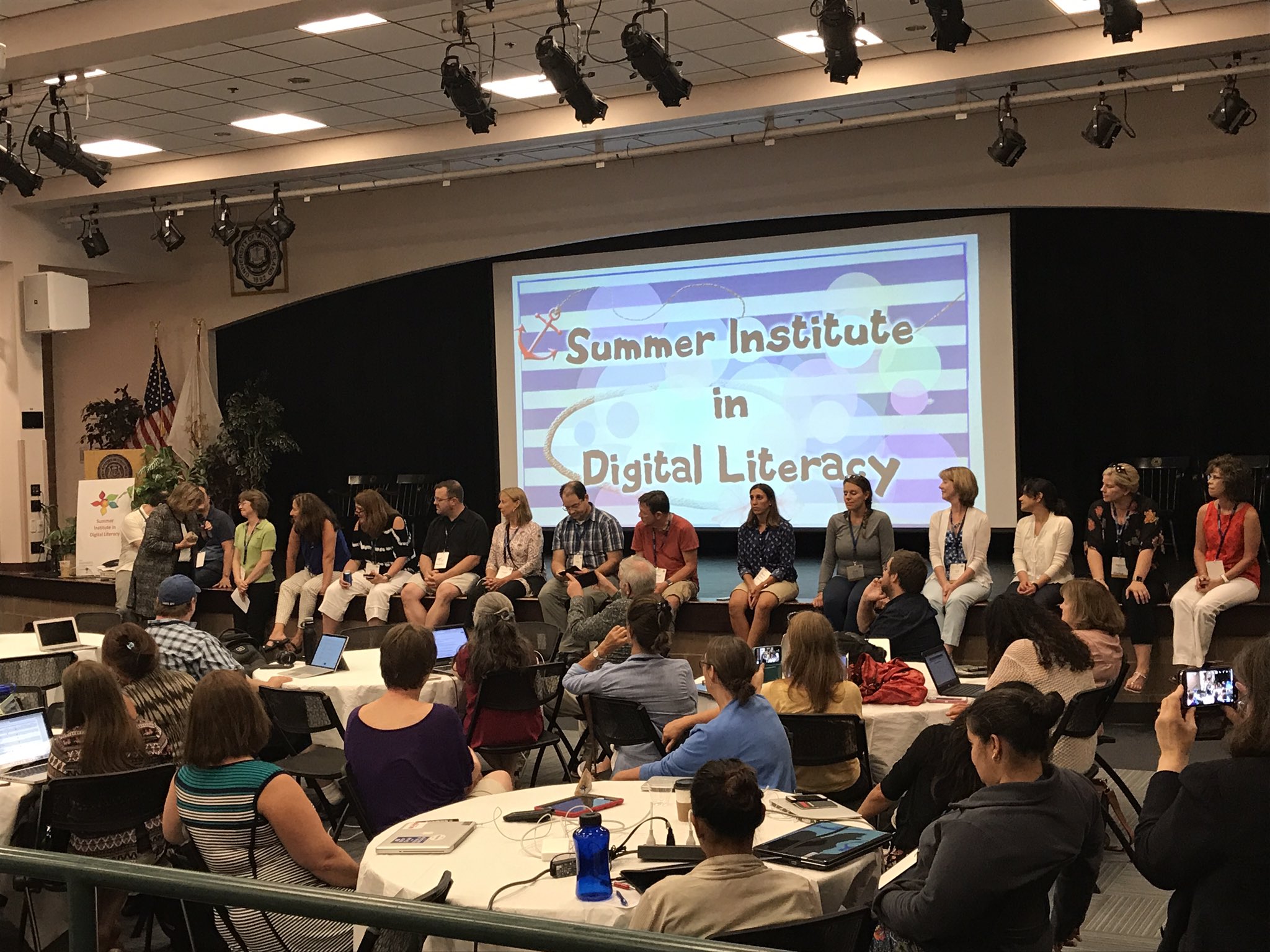As anyone familiar with online teaching knows, critiques of content management systems, especially Blackboard (Bb), are common.
From articles in the popular media, to critiques in peer-reviewed journals, to an analysis from an Bb itself on the way it is used by instructors and students, there are many, many of us out there who dislike the way that an LMS, especially Bb, dictates (either explicitly or implicitly) the way that we teach and learn online.
A recent conversation with a colleague about this topic reminded me of the many reasons why I, personally, dislike Bb:
- The interface is almost entirely teacher-centric, and even the features that allow students to contribute (discussion forums, and “innovations” to the LMS like blogs and wikis) are still very didactic in nature requiring that the teacher set them up in a manner to “allow” students to contribute. For instance, look at the many options available in just the “discussion board” settings in the screenshot below from Bb and consider the levels of autonomy that the teacher can decide upon for students, leaving them with fewer and fewer decisions to make for themselves. This is not really a discussion, but an assignment.
- Similarly, the interface is designed on a “delivery” model of content. Yes, a creative instructor could build some self-guided learning, inquiry, and even “gamification” into the system (which Bb has conveniently added as “achievements,” but it is centered again on content consumption, assignments submission, and the gradebook. Again, the premise with the LMS is that students are logging in to view content that the teacher has created (or curated), and that this content (and this content alone) is what is important. Even if students create content (and could, theoretically, do so by embedding images, videos, or other types of digital artifacts). Still, for the most part, when directed to engage with the content (and I haven’t even mentioned online quizzes/exams), students are encouraged to do so most often to earn points.
- Even in the best possible case, where a teacher is open to multiple revisions of an assignment that allows students to engage in an iterative process of learning, the interface for responding to assignments is, again, didactic, with the student submitting a paper, the teacher using commenting tools and rubrics to reply and, perhaps, opening up another “attempt” for submission. In contrast to a more open and flexible system of collaboration (as enabled by, say Google Docs or even the most current version of Word with synchronous and cloud-based editing), this workflow in Bb still relies on discrete assignments, deadlines, and grades.

There are more critiques that I could levy, but these are the main concerns that I have with Bb. So, from my earliest experiences teaching at the university, then, I have been trying to upend the expectation that I must use an LMS to organize my courses… as well as my thinking and my teaching. It is a struggle, and I have succumbed to the convenience (and mundane normality) of Bb in my past few semesters when teaching masters and doctoral courses all online. (I’ll have to describe my (compromised) rationale for all that in another post, but suffice it to say that I have, at least in recent times).
For the moment, I want to reflect on my journey with wikis as an alternative to the traditional LMS, in particular, with Wikispaces. Eagerly heralded as one of the revolutionary Web 2.0 tools that would democratize knowledge, especially for digital teaching and learning, wikis have been a staple of my teaching and professional development work for over a decade. So, like many others in the ed tech community who were both saddened and shocked when Wikispaces announced its imminent demise (some more shocked and outraged than others), I knew that this was more than just a moment to rethink where I store my data and how I organize my teaching.
First, a quick note of thanks to Wikispaces. Yes, I know that I have lots of data to recover, and that will be a pain. But, I can’t complain. I’ve used, enjoyed, and promoted Wikispaces for over a decade, and I appreciate what they have done with and for educators. Alas, like anything that has been offered for free, I am well aware that it too could go by the wayside (and soon will be). Wikispaces, alas, is no different. People are figuring out ways to save and repurpose their Wikispaces data, and I will, too (before the end of July!).
So, instead, I look at this as an opportunity to rethink my presence on the web as a teacher, teacher educator, and scholar. I will do that in the weeks and months to come. What I want to reflect on for a moment, however, is different. I want to think about why I really used Wikispaces, and whether I was being as open-minded, collaborative, and innovative as I thought I was.
That is, even as a progressive-minded educator, opting to use Wikispaces as a substitute for the LMS, as a tool for students to collaborate and contribute to our classroom community (as well as during workshops in which I lead professional development for teachers), I don’t know that I have fully enacted or lived up to my egalitarian ideas. If I were to do an honest accounting of all the Wikispaces that I manage, and see what I have contributed versus others, I would guess that I am, at best, close to a 50/50 balance. More likely, I am the one doing most of the adding and revising, especially in my course and workshop wikis.
In other words, at a deeper, more substantive level, have any of the wikis that I have created — and the pedagogy that I have enacted surrounding those wikis — really been about the participants, or has it been about me?
For all the class websites that I have created with Wikispaces, including ones for undergraduate, masters, and doctoral students, and for all the pages that I have created for workshops and longer PD institutes, I have to wonder… was I creating things on Wikispaces because it was convenient for me?
Was this a technical choice, perhaps, because giving a wiki address was an easy to find a domain (back before shortened URLs and QR codes made it easier to get to a Google Doc?)?
Was it because I wanted the public facing interface and immediate editing as a way to fit my own style of teaching, and not so much as a tool for really encouraging substantive contributions and communication amongst students?
I’ve been wondering all of this because – as I prepare to download the data from dozens of wikis and figure out where and how to archive it – I’ve noticed that I am the main contributor to most of the wikis I’ve begun. There are exceptions, of course, including our writing project’s wiki which has existed for nearly 10 years and contains the contributions of dozens of teachers. There is also a smattering of wikis that I’ve created in a one time workshop, inviting teachers to create their own page, for a day, that then linger in cyberspace. And, of course, there are the class wikis, where I have had varying degrees of success with students creating and curating their own profile pages and contributing to other sections of the class wiki site.
Still, the challenge is taking a deep, thoughtful look at all of these wikis again and thinking about who it is that has done most of the contribution. There is the old adage that “school is the place where young people go to watch old people work.” Bb, certainly, seems to be virtual manifestation of that physical truth about schools.
My question, at least at this moment, is whether or not I have been simply recreating that truth under the guise of collaboration, creativity, and inquiry by using wikis…
… or, have I really done anything different in the space of hybrid/online learning over the past 10 to 12 years? And, to circle back to the dilemma of the LMS, this has given me pause to seriously reconsider my use of Bb, too.
I’ve started to become complacent, and that is a dangerous place to be when it comes to digital writing and digital teaching. Like most teaching dilemmas, this is a wicked problem, and one that I will need to wrestle with more and more as the July 31 deadline for Wikispaces’ imminent demise comes closer and closer. In a way, I am thankful for the the opportunity to rethink why and how I create and curate materials for the web, for students, and for other teachers. I don’t know that I will ever have the answer, but I hope to soon have some thoughts on how to approach it from a new perspective.
Photo by rawpixel.com on Unsplash

This work is licensed under a Creative Commons Attribution-NonCommercial-ShareAlike 4.0 International License.









